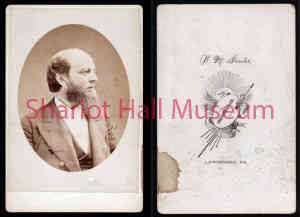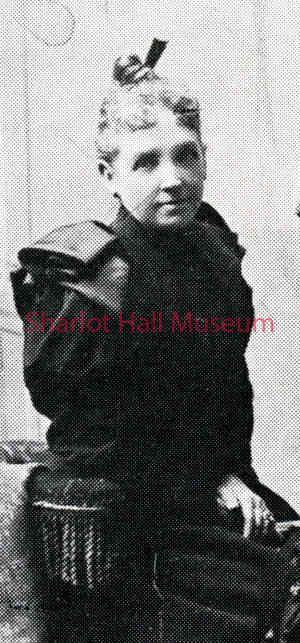By Marjory J. Sente
Bishop John Heyl Vincent, the Chautauqua Institution’s founder, and Lewis Miller, an Ohio businessman with deep religious roots, called an assembly in 1874 to train Sunday school teachers. The site of the initial two-week meeting was an old Methodist revival camp on the shores of Lake Chautauqua near Jamestown, New York. Nearly 15,000 people attended the assembly, and out of it grew the Chautauqua Movement. The movement took its name from the nearby lake, an Iroquois word referring to two moccasins tied together, which describes the shape of the lake.
 Vincent believed, “Self-improvement in all our faculties, for all of us, through all times, for the greatest good of all people - this is the Chautauqua Idea, a divine idea, a democratic idea, a progressive idea, a millennial idea."
Vincent believed, “Self-improvement in all our faculties, for all of us, through all times, for the greatest good of all people - this is the Chautauqua Idea, a divine idea, a democratic idea, a progressive idea, a millennial idea."
Soon the founders recognized the need of a way to get the Chautauqua Idea to the general population, so the Chautauqua Literary and Scientific Circle (CLSC) was born in 1878. Initially, the CLSC was a four-year course of home-reading study that allowed people across the country, and eventually the world, to gain the equivalent of a college education.
Not only was this an early attempt at distance education, but it was also an attempt by the founders to show people how best to use their leisure time rather than drinking or gambling. By 1889 reportedly 150,000 people in the United States were studying the prescribed course of instruction. Students who signed up were encouraged to form local reading circles. The circles could share the cost of the books for the course, as well as participate in a common educational experience. After four years of study, students would “graduate” and receive certificates.
By 1888, just ten years after the founding of the CLSC, Prescott had its own circle. First president of the Prescott Chautauqua Reading Club (PCRC) was Mrs. F.A. Tritle with Mrs. A.E. Foote elected secretary. No treasurer was needed initially because everyone bought their own materials.
According to an article in the February 22, 1888 Arizona Weekly Journal-Miner, only two of the 21 members were taking the regular Chautauqua course. The PCRC members decided to develop their own course of study primarily on history and American literature. Each was also responsible for selecting a country and keeping abreast of its current events, as well as learning about its history and culture. Each member reported on her country at the meetings.
 The PCRC met weekly in a different member’s home. During the opening roll call, members offered quotations on a specific topic or author. They also shared poetry, short essays, articles and original pieces of writing. On special occasions, such as St. Patrick’s Day, they intensively researched a single subject. For instance, each member focused on some aspect of Ireland and St. Patrick’s Day, such as St. Patrick, the Blarney Stone, the Shamrock and the Irish flag.
The PCRC met weekly in a different member’s home. During the opening roll call, members offered quotations on a specific topic or author. They also shared poetry, short essays, articles and original pieces of writing. On special occasions, such as St. Patrick’s Day, they intensively researched a single subject. For instance, each member focused on some aspect of Ireland and St. Patrick’s Day, such as St. Patrick, the Blarney Stone, the Shamrock and the Irish flag.
The PCRC became the de facto women’s club of Prescott. Sometimes meetings included high tea. In the summer, the Club would invite men on a day-long picnic. In 1888, in addition to serving a nice meal at Senator Camp, club members performed. Miss Amelia Rush sang vocal selections, while Mrs. J. W. McGowan and Miss Mary Otis gave recitations. The following year a picnic was held at James E. Wing’s Granite Dells ranch.
In September 1892, the Chautauqua Institution’s founder, Bishop John Heyl Vincent, came to Prescott which was hosting the annual Arizona Territory conference of the Methodist Episcopal churches. His mission was multifold: preside over the meeting; dedicate the local Methodist Episcopal Church; and spread information about the Chautauqua Idea.
Next week, the traveling Chautauqua Experience in Prescott.
"Days Past” is a collaborative project of the Sharlot Hall Museum and the Prescott Corral of Westerners International (www.prescottcorral.org). This and other Days Past articles are also available at archives.sharlothallmuseum.org/articles/days-past-articles/1. The public is encouraged to submit proposed articles and inquiries to dayspast@sharlothallmuseum.org. Please contact SHM Research Center reference desk at 928-445-3122 Ext. 2, or via email at archivesrequest@sharlothallmuseum.org for information or assistance with photo requests.


